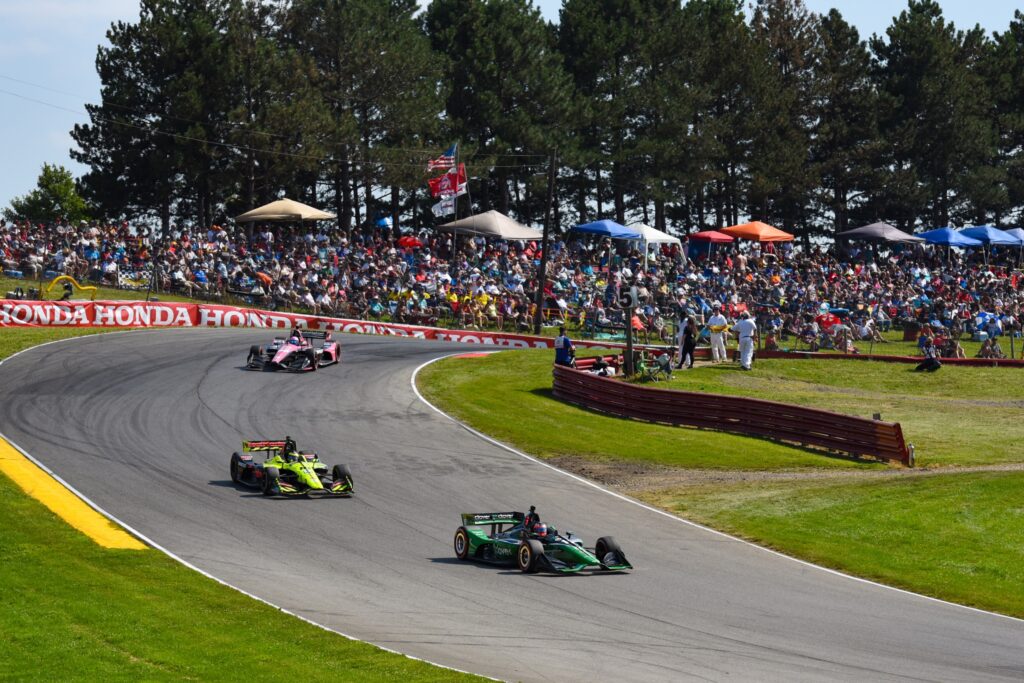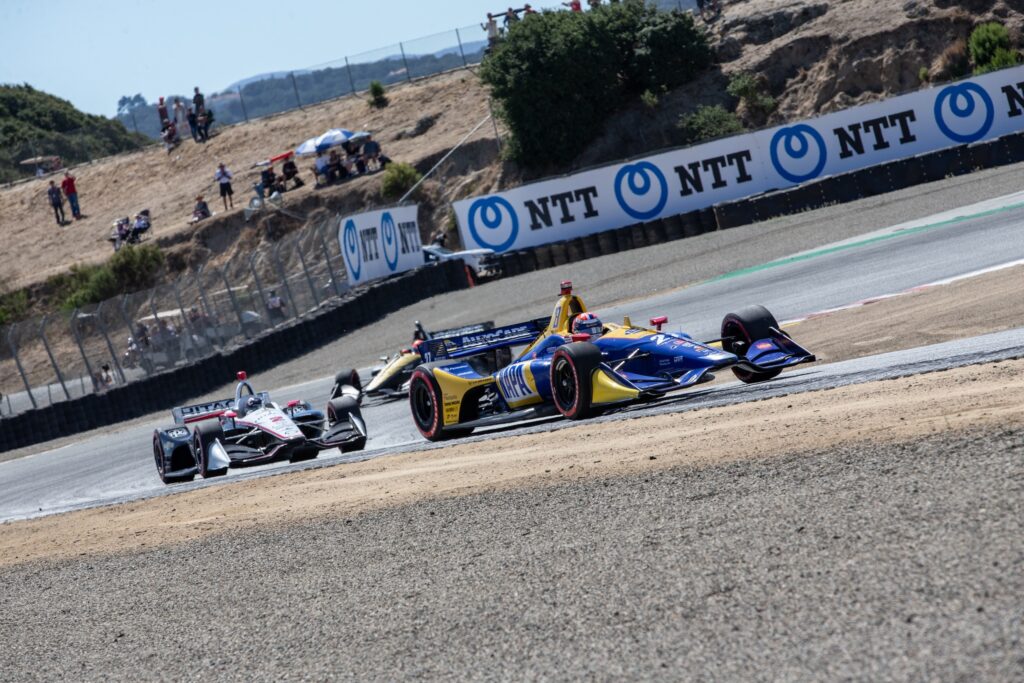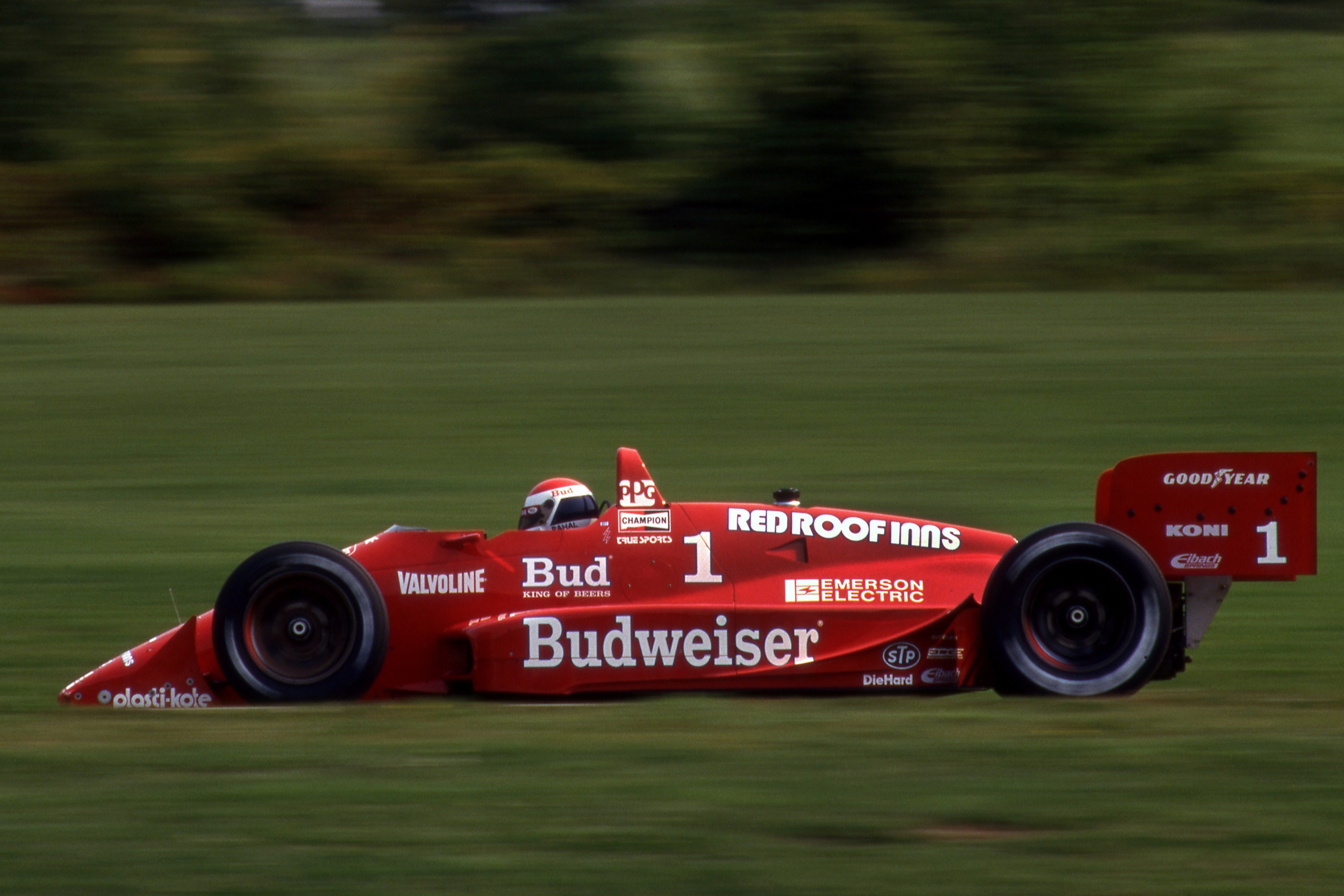In the years immediately following World War II, a revolution broke out across America. Thousands of American soldiers had discovered the magic of nimble, fun-to-drive sports cars while stationed in Europe, and when they came back home, many of them brought shiny, new, gasoline-powered toys with them. The question: Where could those keen pilots of Jaguars, MGs, Ferraris and Porsches safely push their cars to their limits in a controlled environment?
At first, the answer was a series of competitions held on closed-off public roads. Of special historic significance was the inaugural Watkins Glen Grand Prix in 1948, organized by Sports Car Club of America member Cameron Argetsinger and run in and around the New York village of the same name. Argetsinger laid out a 6.6-mile course that sped past local landmarks including the Seneca Lodge, with a finish line on Franklin Street in downtown Watkins Glen.
Similar events were popping up all over the country. In the Midwest, the Chicago Region of the SCCA organized road races starting in 1950 on a 3.35-mile course north of Elkhart Lake, Wisconsin. Out west, the Pebble Beach Road Races were staged near the Pacific Coast on a tight 2-mile course near the famed Golf Links and Lodge.
These rudimentary contests gained traction quickly, attracting strong fields of the top road racers of the day and big crowds. However, the chief drawback soon became apparent: safety, both for the competitors and the spectators. Many states soon moved to ban the closure of public roads for racing events.
This resulted in a sudden boom in the construction of purpose-build road racing venues in North America. Within a few months of each other over the winter of 1955-56, new custom-built tracks near the original Watkins Glen and Elkhart Lake venues would host their first major events. By the end of 1957, Lime Rock Park, Bridgehampton Raceway, Riverside International Raceway and Laguna Seca Raceway were all open for business.
A second wave soon followed in the early 1960s. Mosport Park, located in Bowmanville, an outer suburb of the Greater Toronto Area, opened in 1961. Mid-Ohio Sports Car Course, operating under the auspices of a “driver training school,” followed a year later. And the Circuit Mont-Tremblant, also designed by Mosport track architect Alan Bunting, was operational by 1964.

Most of those facilities built in the ‘50s and ‘60s– with the exception of Riverside and Bridgehampton, victims of urban development – are still in operation more than half a century later. Of the survivors, the amenities have been upgraded, but the basic racetracks have for the most part been meticulously preserved.
For example, when Lime Rock was repaved in 2008, owner Skip Barber used original surveying data to ensure that every aspect of the track geometry remained faithful to the 1957 design. The Mid-Ohio and Laguna Seca layouts have seen only slight changes, and beyond safety mods, Road America is the same as it was more than 50 years ago.
There’s a reason for that: they got the tracks right the first time, and future generations were smart enough not to mess with success. Jim Trueman invested millions of dollars into Mid-Ohio in the early 1980s, erecting guardrails (there were none – just earth berms!), forming amphitheater-like spectator mounds and building a semi-civilized paddock. But the basic track was left just the way Les Griebling had plowed it out on his grader more than 20 years earlier.
“When Jim Trueman bought the track, he built it out but kept it just as beautiful. It retained its original flavor,” recalls sports car ace Johnny O’Connell.
Griebling wasn’t an architect or engineer by trade; he owned a foreign car repair shop and wanted a place where he could drive fast without worrying about endangering other motorists or getting hassled by the cops. He pretty much built Mid-Ohio as a playground, not a business entity.
He was just a guy with 200 acres of farmland and a keen sense for the kind of roads that appeal to drivers. He pretty much just laid out the track to suit the contours of the land.
Sometimes, the amateurs operating the bulldozers get a bit of help from professionals. In a famous anecdote, when Alan Bunting was working on Mosport, Stirling Moss stopped by to check up on the construction. He suggested splitting the intended hairpin into two separate turns, linked by a microscopic little straight, to make the sequence more challenging for drivers and more interesting for spectators. What is now known generically as the Turn 5a and 5b complex is more frequently called Moss Corner. (In an unrelated bit of trivia, Moss won the track’s inaugural event.)
But that’s a common denominator to all the great road courses in North America: they blend seamlessly into the topography of the land they are built on.

Whether it was Bridgehampton, weaving through the Long Island sand dunes; or Laguna Seca, where racecars literally blast up and down the side of a small mountain, the best tracks were built to compliment the available land.
And maybe that was the shared bit of genius among them: building sites that had the same landscape traits as the best driving roads in the areas where the organized road races were popular.
Looking at maps – or even better, driving – the original road circuits and then the purpose built tracks at Watkins Glen and Elkhart Lake (which is officially called Road America, by the way), you can’t help but notice the resemblance to some of the key corners.
You often hear the great road courses referred to as “driver’s tracks.” That’s something you don’t often hear about modern layouts, which are designed with safety aspects such as impact potential and runoff geometry emphasized over driver skill or satisfaction.
A track like Road America – four miles long, with flat-out blasts through forests linked by mostly high-speed turns for an average speed near 150 mph – would never be built today.
But then none of today’s modern, Herman Tilke-designed autodromes (with the exception of Circuit of the Americas, which itself is somewhat the happy product of the sloped land it is built on) would inspire the same kind of reverence from drivers.
“One year we had a DNF in the middle of the summer at a bad time in terms of the championship,” says four-time IndyCar Series champion Dario Franchitti. “I remember thinking, the only consolation is that next week we’re at Elkhart Lake, which is the kind of track you live for from a pure driving standpoint.”
Another product of maintaining the natural environment around road courses is frequently a beautiful environment for spectators.
Visiting a pastoral track such as Road America, Mid-Ohio, Lime Rock and Mont-Tremblant is like going for a hike in a lovely state park and having a car race break out around you.
Versatile champion racer Bobby Rahal has fond memories of attending races at Mid-Ohio and Road America when he was young.
“I’ve been going to Road America since I was four – I started going up there with my dad when he was racing” Rahal notes. “We’d walk around the entire track watching the 500-mile race. Those experiences, for sure, are part of what inspired me to be a professional racecar driver.
“Same with Mid-Ohio,” he adds. “My father was there for the first ever race in 1962 and I came as a little kid. Mid-Ohio was built for people who enjoy watching races, and they show that appreciation by attending in good numbers and being strong advocates of the track.”
There’s a tendency these days to moan about how modern racing has turned into corporate stars in boring spec cars. For even the most rigid purist, that cloud of pessimism evaporates at the right venue – whether the cars are American Le Mans Series or 24 Hours of LeMons.
Think of classic road courses as a portal into the past – especially on vintage racing weekends.
Originally published in RACER magazine


